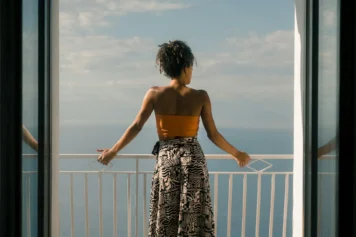Travel to Madagascar, and Andringitra in particular, is a rugged adventure sure to pique the interest of travelers. A spectacular array of landscape changes, animals and plants lie within the park boundaries, but equally awe-inspiring are the stories of the Malagasy living in and around Andringitra.
Their ability to turn their home into an off-the-beaten path travel destination (with the help of a couple outside organizations) and directly improve the local economy is a considerable success in a country currently facing so many problems with development and political stability. Travelers to the area should feel confident that their visit not only benefits their wanderlust, but also the local quality of life.
When visitors enter the Sahanambo valley adjacent to Andringitra National Park in the southern highlands of Madagascar, the world outside feels distant and irrelevant. Terraced rice fields and distant mountain ranges line the one dirt road that runs out of the small market town and last stop on the bus route, Vohitsaoka, to the park entrance. Small, dust-coated children race from nearby clusters of mud huts to the road to shout “Salam!” at curious-looking tourists – their greeting in Malagasy rather than French – one of many testaments to how self-sustained life in the valley is.
The same claim could be made about Andringitra’s tourist industry. Although the park itself was founded with the collaboration of WWF, an international organization, and its Malagasy partner ANGAP in 1999, the creation of its hotels and infrastructure for nearby excursions has been a bottom-up, grassroots endeavor. It could not have happened without the close involvement of locals, who mostly were – and still are – farmers or cow-herders.
Currently, Madagascar National Parks hires guides and porters born and raised in the area and who have an intimate familiarity with the land. Two of the camps below the climbers’ haven, the Tsaranoro massif, were established and run locally, while the third, more luxurious of the pack (Camp Catta) is an offshoot of a Fianaratsoa-based hotel company.
Needless to say, tourism in Andringitra has a direct impact on economic development in the area and relies heavily on its homegrown resources. One could even argue that because of locals’ deeply rooted involvement, they have avoided changing the character of the valley the way tourism in some places has transformed quaint fishing villages into built-up vacation hotspots.
Read more: Jessie Beck, BootsnAll


